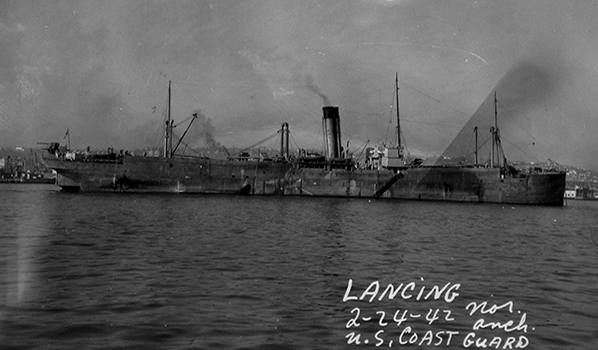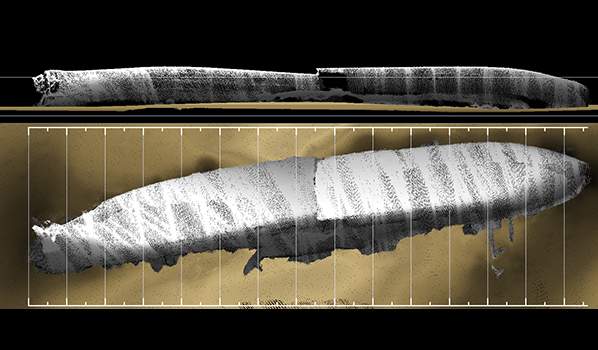Lancing
Ship Stats
Location: 35°2'2.69"N, 75°26'40.81"W (35.03408, -75.44467)
Depth: 160 feet
Vessel Type: Originally built as a tramp steamship for bulk cargoes, it was dramatically altered to become a factory whaling ship capable of carrying large volumes of whale oil. During World War II it was converted into a tanker to carry petroleum products.
Length: 470 feet Breadth: 57.2 feet
Gross Tonnage: 7,866 Cargo: 8,800 tons of fuel
Built: 1897, Charles Connell and Company, UK
Hull Number: 240 Port of Registry: Lavik, Norway
Owner: Melsom and Melsom, Larvik, Norway
Lloyd's Register Details: Steel hull, steam screw, single screw, two decks, triple expansion three cylinder steam engine
Former Names: Flackwell (Flack D. and Son, 1922-1925); Calanda (Foreign Trading Corp., 1920-1922); Omsk (Russian Volunteer Fleet, 1916-1918, The Shipping Controller, UK, 1918-1920); Rio Tiete (Peterson and Company, 1914-1916); Knight Errant (Knight Steamship Company, 1897-1914)
Date Lost: April 7, 1942
Sunk By: U-552 Survivors: 49 of 50 (1 dead)
Data Collected on Site: High resolution multibeam; listed on the National Register of Historic Places
Significance: Lancing's loss in World War II exemplified the importance of ordinary merchant vessels, such as freighters and tankers, to supply critical war material in an active battlefield. Lancing braved the waters off the United States and crossed the Atlantic Ocean to Great Britain to fulfill the need of Allied nations for oil. Lancing's physical remains are directly connected and associated with the U-boat actions during World War II. A single large hole visible today in Lancing's hull is testimony to the destructive power of U-552's torpedo and a precise moment in time when the vessel became a casualty of Germany's war on Allied merchant shipping.
Wreck Site
Lying in about 160 feet of water, Lancing remains sitting nearly upside down on the seafloor with a slight list to port. The vessel's longitudinal orientation is northwest to southeast. Visible remains suggest that the bow lay at the site's northwest end and lies partially buried in a flat sand/mud plain.
The hull looks to be in good condition with little damage, besides the torpedo impact zone near amidships. An opening in the hull's left side near amidships allows access to the machinery space. Besides the main feature being the upside down hull, the most prominent feature on the exterior of Lancing, is a large, four bladed bronze propeller and rudder. Lancing's unique and distinctive whaling slipway, located above the stern's fantail, is clearly visible. The large 4-inch naval gun that is positioned at the tanker's stern is buried in the sand. There is access to the stern's main deck, forward of the poop deck, where there are bollards, mooring cleats, and a machine gun mount.
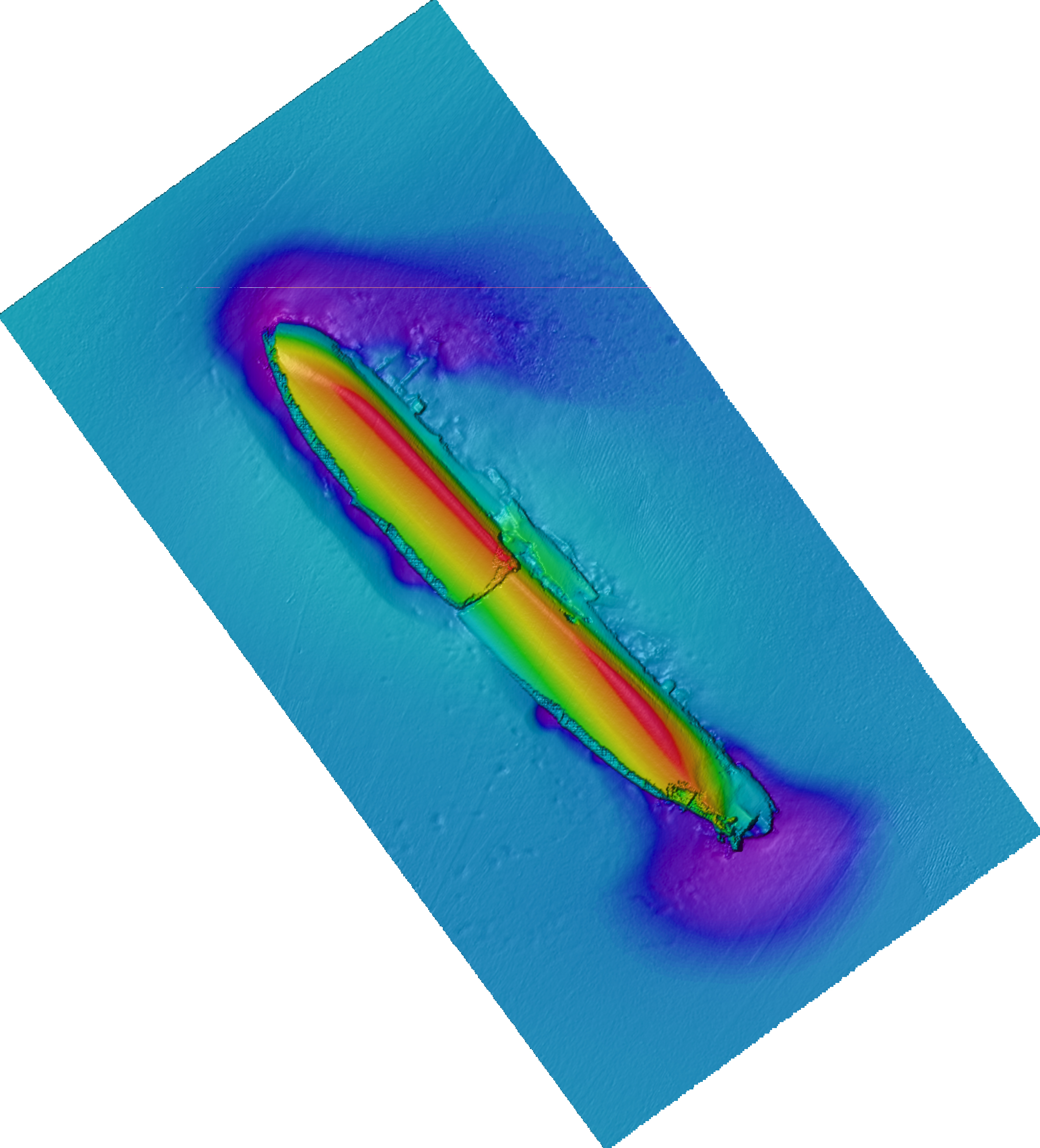
The hull is broken into two pieces allowing access inside the ship. A 50-foot hole forward of the stern most likely coincides with the torpedo impact zone. The main boilers, steam engine and auxiliary boiler are all present on the site. Four boilers are visible and have dropped from their bedplates and fallen halfway out of the hull.
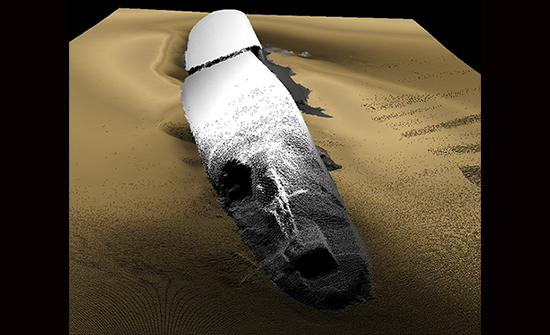
Historical Background
Lancing, originally built as Knight Errant in Glasgow, Scotland, launched in December 1897. The ship was bought and sold several times over the years, and in 1925, it was purchased by the Globus Whaling Company and renamed Lancing. At the outbreak of World War II, Lancing and other Norwegian ships were ordered to the nearest Allied or neutral port and Lancing was directed to America. Lancing continued to support the war effort even though its home country, Norway, was invaded and under German occupation (April 9, 1940, until May 8, 1945).
On March 28, 1942, Lancing departed Curacao for New York with 8,802 tons of fuel onboard. It sailed alone and the crew was unaware that a German submarine, U-552, followed them. On April 7, 1942, Lancing was traveling in the early morning hours when it was suddenly torpedoed without warning 14 miles off Cape Hatteras, N.C. The torpedo hit the hull's starboard side amidships blowing up a portion of the deck and creating a large hole in the side. The engine room flooded, killing one crewman, and the radio equipment was fatally damaged so no distress signal was sent.
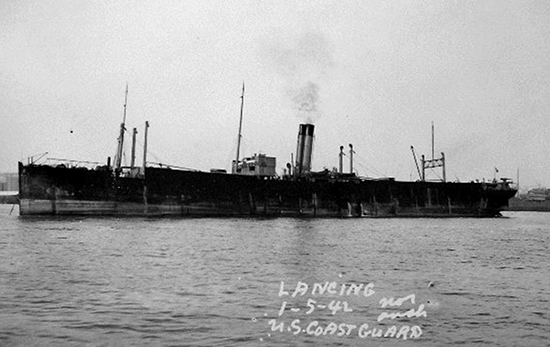
Of the 50 member crew, there was only the one fatality. Forty-nine survivors made it into lifeboats and rafts where they stayed near the sinking ship until it sank about an hour and a half later. Shortly after the ship sank, an American tanker, Pan Rhode Island, picked up 28 survivors and the British patrol vessel, HMT Bedfordshire, picked up the other 21 survivors.


